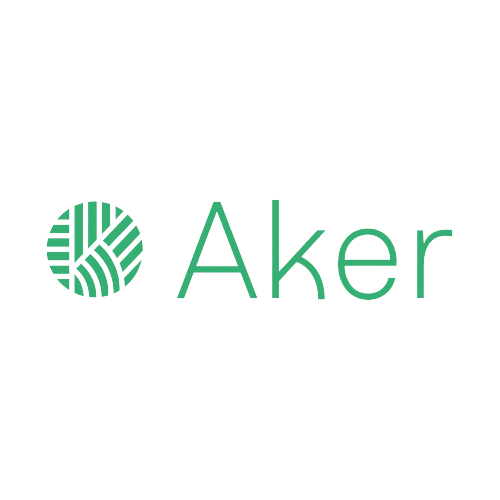Even if you’re not a developer, it’s possible to create highly complex applications without spending a huge chunk of your budget or waiting around for months or years. If you’re looking for someone to thank…thank the low-code no-code approach.
Low-code or no-code platforms ensure you write little to no code as you produce robust applications that both support and advance your enterprise. In addition to simplifying the app development process, these platforms enhance processes, offer easy workflow automation, and provide many other helpful capabilities that drive business growth.
With all of these benefits, it’s no wonder the low-code no-code revolution is booming.
Gartner predicts that over half of medium and large organizations will have adopted low-code tools as one of their key strategic app platforms by 2023. Forrester predicts that the potential market of low-code development platforms is expected to reach $21.2 billion by 2022 with an annual growth rate of 40%.
But what exactly are low-code and no-code platforms? And how can these technologies help your enterprise succeed? Let’s dive in.
What is the Difference Between Low-Code and No-Code?
At first glance, it’s easy to confuse low-code and no-code platforms because they share some things in common.
They both allow users to create apps with the help of visual modeling software and they were created as a reliable alternative to traditional software development. However, the main difference leans more towards the individuals that use these advanced platforms to create applications.
In the low-code space, you have professional developers who are responsible for streamlining and simplifying their work to deliver high-quality apps with some or zero coding.
Experienced developers build apps quickly by using visual interfaces with pre-built functions and simple drag-and-drop features to create apps. Gartner indicates that low-code development platforms will be accountable for over 65% of app development by 2024.
In the no-code environment, on the other hand, are “citizen developers” who have no prior experience in coding. Yet, they are able to build apps to facilitate the processes involved in business operations using IT development guidelines. They use no-code platforms to easily build, test, and deploy business apps based on enterprise needs.
Now that the confusion between the two is out of the way, let’s look at what low-code and no-code platforms have to offer.
What are Low-Code and No-Code Development Platforms?
Both low-code and no-code development platforms are built with the same thing in mind: speed, agility, and simplicity.
These visual software development platforms allow enterprise developers and citizen developers to design and create apps rapidly by using simple drag and drop functionalities—rather than extensive coding and language—to create applications.
They are self-service apps with pre-built forms, existing templates, and elements that allow professional and non-technical developers to quickly build a working application with little hassle. Because the low-code no-code approach automatically generates and deploys code, it saves the IT team time, effort, and resources needed to code an entire app manually.
Since low-code and no-code platforms are agile (meaning that users can make changes even after the planning phase is over), it’s easy to separate key elements and reuse them in case there are any changes needed during the development process. This provides an incredible amount of flexibility during the app development process.
Benefits of Low-Code and No-Code Platforms
Whether it’s for business users to create and design apps themselves or simplify software development for developers by automating manual processes, no-code low-code platforms allow for the creation of flexible apps so teams get things done and achieve enterprise success together.
So, what are the most valuable benefits of no-code and low-code platforms?
Improved Speed and Agility
Of all the benefits of low-code no-code platforms, the ability to speed up the process of app development and delivery is the most critical one.
The simple nature of low-code no-code platforms that involves dragging and dropping functionalities, pre-built intuitive interfaces, easy-to-implement APIs and connectors—as well as one-click application delivery—make it the perfect option when speed is a top priority.
Reducing app development time means that users get to the production phase even faster. By completing a project in a few months or weeks instead of a few years, enterprises have an opportunity to achieve even more. This also eliminates the complexity of app creation, testing, and deployment.
The overall result of low-code and no-code platforms is a more efficient development process, which reduces costs and time along the way, making way for innovation to help their enterprise stay ahead in competitive markets.
Customized Solutions for Business Problems
These platforms led to the rise of a new species of developers, commonly known as the citizen developer—a non-technical professional, or business user, that creates business applications using the general knowledge they have as per the needs of the customer and company.
Since business users understand the needs of the business, they use that knowledge to create apps that solve customer pain points. This kind of approach helps reduce time to software development and translates to faster time to value.
Automation of Simple Tasks
No-code and low-code platforms offer anyone powerful tools and integrations, including drag-and-drop functionality and intuitive pre-built interfaces that allow a user to create apps without writing any line of code.
These tools are used to automate repetitive business tasks, complex workflows, and end-to-end processes. The fun part is that citizen developers and professionals can collaborate on different tasks to speed up the app development process and reduce time to market.
The Limitations of Low-Code and No-Code Platforms
While low-code no-code platforms have numerous benefits, they also fall short in several areas. Here are the two major limitations that enterprises should be aware of.
Lack of Visibility
Among the biggest challenges of no-code and low-code tools is the fact that it can be difficult for your enterprise to keep track of what employees are developing. In this case, if an employee builds an application using a rapid app development tool installed on a computer, it lacks visibility to the IT team.
To improve visibility, the app needs to be moved to the cloud—a more secure environment that offers enterprises the right to access and grant permissions.
Vendor Lock-In
Another big challenge users of low-code and no-code platforms face is vendor lock-in. While some vendors may generate apps using open codes that are simple to use, clean, and work from anywhere, others lock you into the platform in different ways.
Some generate intricate codes that are almost impossible to maintain outside the platform. For others, the code becomes invisible and it’s hard to move or edit your applications to another platform once you stop using the tool. As a result, the users may lose some level of control, especially when it comes to maintaining the security of the apps.
Understanding the vendor’s policies is crucial before you begin using the tool. Another good move is to find out if it’s possible to maintain the app outside their platform.
Microsoft’s Approach to Low-Code No-Code
Microsoft’s Power Platform bundles together its no-code and low-code tools as part of the business app framework. The platform combines critical Microsoft technologies, such as Power Apps, Power BI, Power Virtual Agents, and Power Automate in a single powerful app platform.
These platforms are extensive and adaptive, meaning that teams build solutions, analyze data, automate processes, and create virtual agents within a unified environment that is fully integrated. For many enterprises, Microsoft’s Power Platform has become a crucial tool, not only for creating and designing custom apps but also for robotic process automation.
Already we have seen Power Platform acting as a rapid response tool for software development. Power Platform allows IT teams to collaborate and build custom apps, while maintaining unique apps that fill certain gaps in service capabilities—especially in the wake of a global pandemic.
As a result, a lot of innovation has been seen to develop rich web and mobile applications that are useful in different sectors. To see examples of how a tool like Power Automate is directly benefitting enterprises, be sure to check out these Power Automate tips from Jon Levesque, Microsoft’s Power Platform Senior Evangelist.
____________
With the right structures, models, and strategies, low-code no-code platforms will unlock a new era of innovation for enterprises. These platforms provide tools and frameworks to make the app development process quick, creative, and efficient.
As these tools become more sophisticated, they will become more accessible. Soon it will become the norm for business users to create apps in only a few hours. It’s an amazing thing to see and we applaud Microsoft for making these capabilities so widely available.
At Collectiv, we understand that every organization’s needs are different and they are subject to change over time. We provide proven strategies for planning, analytics, and AI—with a strong focus on Power BI—to make implementation quick and efficient.
Ready to implement the low-code no-code approach? Collectiv’s Power BI Visioning Program is a great place to start.

























